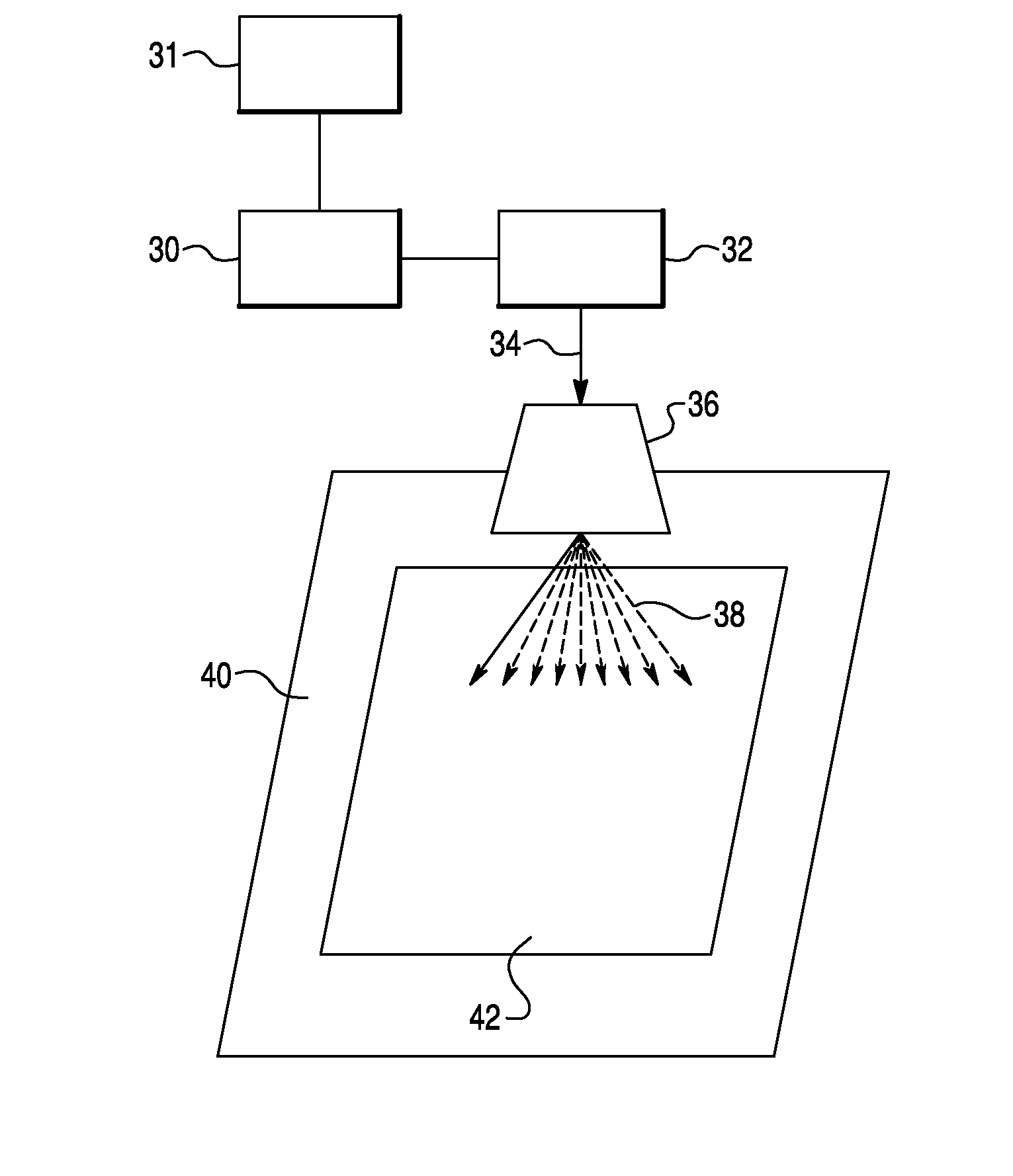Laser etching of an acrylic and polyvinylchloride composition, and laser etched article
a technology applied in the field of laser etching of acrylic and polyvinylchloride composition, laser etching of article, can solve the problems of large laser spot size and coarse graphic image, low quality of laser etching, so as to reduce the visual impact of demarcation line or “seam”, reduce the visual impact of demarcation line, and improve quality. product
- Summary
- Abstract
- Description
- Claims
- Application Information
AI Technical Summary
Benefits of technology
Problems solved by technology
Method used
Image
Examples
Embodiment Construction
[0038]Reference will now be made in detail to exemplary embodiments and methods of the invention as illustrated in the accompanying drawings, in which like reference characters designate like or corresponding parts throughout the drawings. It should be noted, however, that the invention in its broader aspects is not limited to the specific details, representative devices and methods, and illustrative examples shown and described in this section in connection with the exemplary embodiments and methods.
[0039]The terms graphic and graphic design include but are not limited to decorative and artistic designs, non-decorative designs, simulated animal skin designs, patterns, graphic images, wood grain, alpha-numeric characters, corporate and trade logos, and other identifications such as UPC codes, etc.
[0040]The term “laser mark” used herein means to irradiate an article, including one made from Kydex®, with a laser beam to form a graphic design. In the course of marking, the laser beam c...
PUM
 Login to View More
Login to View More Abstract
Description
Claims
Application Information
 Login to View More
Login to View More - R&D
- Intellectual Property
- Life Sciences
- Materials
- Tech Scout
- Unparalleled Data Quality
- Higher Quality Content
- 60% Fewer Hallucinations
Browse by: Latest US Patents, China's latest patents, Technical Efficacy Thesaurus, Application Domain, Technology Topic, Popular Technical Reports.
© 2025 PatSnap. All rights reserved.Legal|Privacy policy|Modern Slavery Act Transparency Statement|Sitemap|About US| Contact US: help@patsnap.com



